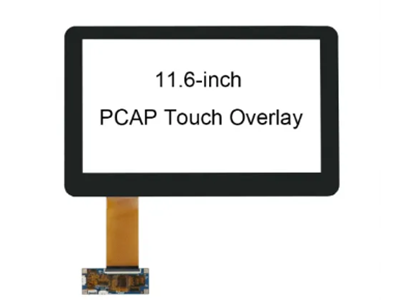Jul. 18, 2023
Electrical Equipment & Supplies
Touchscreen technology has revolutionized the way we interact with electronic devices, offering intuitive and user-friendly interfaces. Among the various touchscreen technologies available, PCAP (Projected Capacitive) and capacitive touchscreens are widely used. In this article, we will explore the differences between PCAP and capacitive touchscreens, shedding light on their distinct characteristics, functionality, and applications.
Basic Operation: Both PCAP and capacitive touchscreens operate on the principle of capacitive sensing, which detects changes in capacitance caused by the presence of conductive objects, typically a human finger. However, their underlying technologies and construction methods differ.
Construction: Capacitive touchscreens consist of a glass panel coated with a transparent conductor, usually indium tin oxide (ITO). This conductive layer forms an electrode grid, divided into rows and columns. When a conductive object touches the screen, it disrupts the electrostatic field, resulting in a change in capacitance. This change is detected by the touch controller, enabling touch input.
PCAP Touchscreens: PCAP touchscreens are a type of capacitive touchscreen that uses a more advanced construction method. They consist of a glass panel with a conductive layer, typically made of a transparent conductive material like copper or silver. The conductive layer is divided into a matrix of intersecting rows and columns, forming a capacitive grid. The touch controller continuously monitors the capacitance at each intersection point, allowing for precise and multi-touch input.

Touch Accuracy and Sensitivity: PCAP touchscreens generally offer higher touch accuracy and sensitivity compared to traditional capacitive touchscreens. The matrix-based design of PCAP touchscreens enables more precise tracking of touch input, allowing for multi-touch gestures, such as pinch-to-zoom or swiping. PCAP touchscreens also exhibit better touch response, enabling faster and more fluid touch interactions.
Multi-Touch Capability: While both PCAP and capacitive touchscreens support touch input, PCAP touchscreens excel in multi-touch capability. The matrix grid structure of PCAP touchscreens allows for accurate tracking of multiple touch points simultaneously. This enables advanced gestures and interactions, making PCAP touchscreens ideal for applications requiring complex touch inputs, such as gaming or drawing apps.
Durability and Environmental Considerations: PCAP touchscreens typically offer enhanced durability and resistance to scratches and damage. The use of tempered glass panels and robust construction makes PCAP touchscreens more resilient to wear and tear, making them suitable for high-traffic environments. Capacitive touchscreens, while still durable, may be more prone to surface scratches and require additional protective measures.
Applications: Capacitive touchscreens are commonly used in a wide range of devices, including smartphones, tablets, and consumer electronics. PCAP touchscreens, with their superior touch accuracy and multi-touch capability, find applications in more demanding environments, such as industrial controls, medical devices, interactive kiosks, and automotive infotainment systems.
Conclusion:
PCAP and capacitive touchscreens share the same underlying principle of capacitive sensing but differ in construction, touch accuracy, sensitivity, multi-touch capability, and durability. Capacitive touchscreens are widely used in consumer electronics, while PCAP touchscreens excel in applications that require precise touch input, multi-touch functionality, and enhanced durability. Understanding the differences between PCAP and capacitive touchscreens enables informed decision-making when selecting the most suitable touchscreen technology for specific applications, ensuring optimal user experiences and functionality.
If you are interested in sending in a Guest Blogger Submission,welcome to write for us!
All Comments ( 0 )